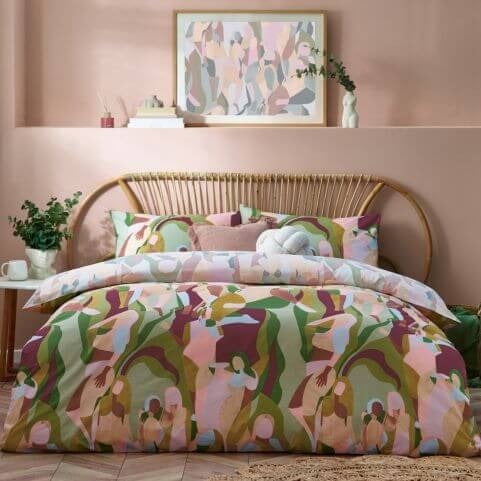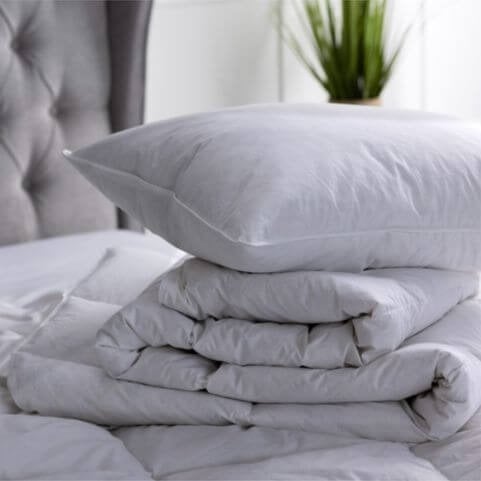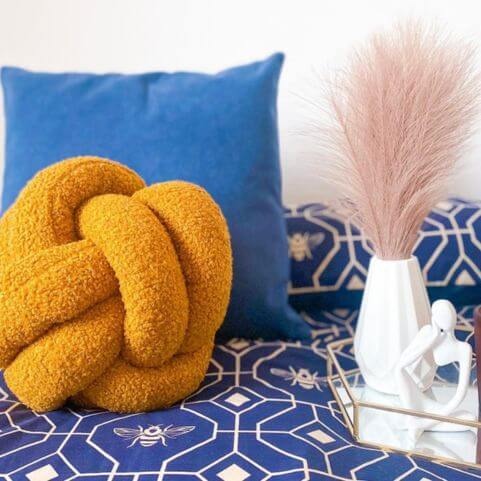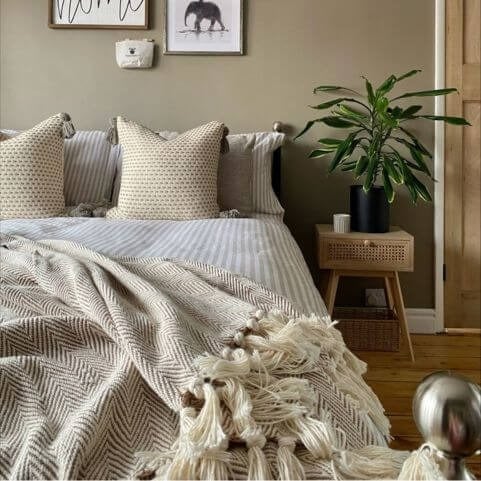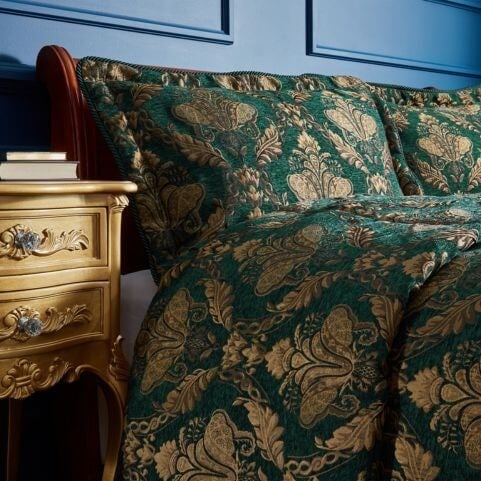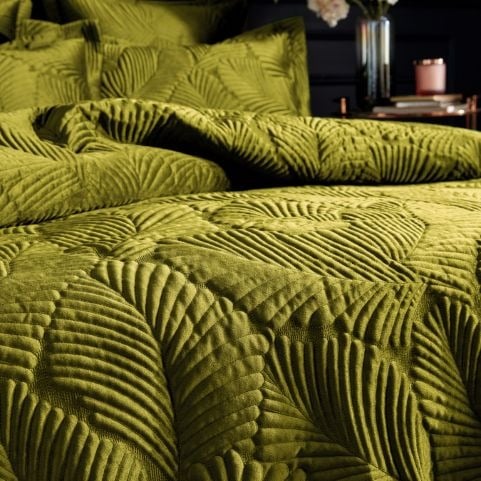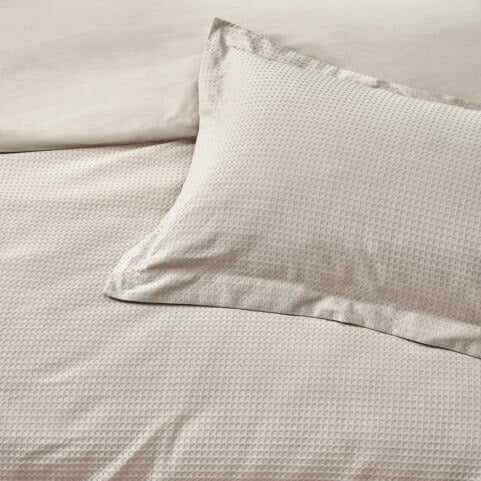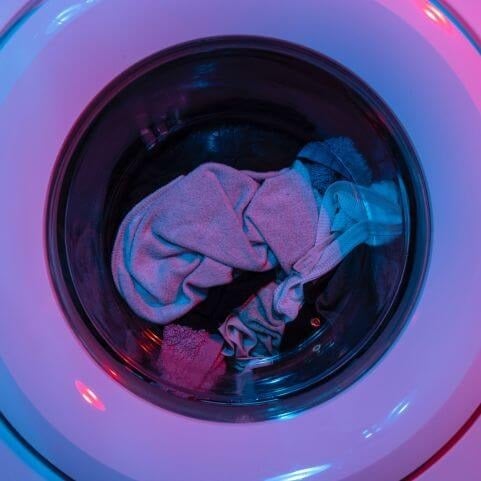dim the lights and dip those duck feather quills – forty winks 101 is now in session.
Ah, bedding. the cornerstone of every great bedroom, the bringer of dreams and your trusted companion through those gloriously sluggish Sunday mornings. It’s safe to say we’re all a little bit in love with our beds, but if Cher’s taught us anything, it’s that love ain’t much without a little understanding – and our bedlinen is long overdue some considered thinking.
Most of us have never stopped to spare a thought for what goes into our bedding arrangement. Weaves, thread counts and tog ratings might sound like intimidating concepts at first, but you’d be surprised just how quickly you can wrap your head around them. From the fundamentals right through to the finishing touches, we’re simplifying the secrets to a good night’s sleep in our beginner’s guide to bedding.
Buying new bedding can be difficult at the best of times, but if you’re jumping in without a solid idea of what you need, disappointment is a likely outcome.
"When choosing new bedding, it's best to start by thinking practically" advises Suzi, Design and Development Manager at furn.com. "What new bedding will benefit your current sleep setup the most? If your mattress is losing its spring, consider a plush topper. Lumpy pillows? Some fresh plump ones will totally transform your sleep quality".
The bedding in your shopping cart should cater to your personal wants and needs, so start thinking about what you’re missing, and what your dream sleep sanctuary might look like.
bed sheets.
Bedding typically refers to any layer above your bedframe and mattress, which makes bed sheets the bedrock of your arrangement. Whether you prefer flat or fitted, all bed sheets are designed to be placed over your mattress, providing a layer of protection and comfort that’s vital for a quality snooze. Fitted sheets come with elasticated edges for easy application and a snug, secure fit. Flat bed sheets contain no elastic, but look neat when tucked and are easier to fold and store.
While mattress toppers and protectors are technically the bottom layers of your bedding arrangement, they’re not strictly necessary. If you’d like a softer sleep or you’re using an old mattress that’s starting to feel more lumpy than luxe, mattress toppers can be a quick and easy fix. Mattress protectors put an extra layer of padding between you and your mattress, keeping it as fresh as possible while lengthening its lifespan.
quilts + pillows.
Once you’ve covered your mattress with a shiny new bed sheet, it’s time to start thinking about quilts and pillows. They’re some of the most basic building blocks in your bedding arrangement, and are vital components to a comfortable night’s sleep. Quilts are thick blankets made from three layers of fabric sandwiched together. Pillows consist of a soft filling – usually down, feathers or a synthetic alternative – encased in a thin fabric covering.
duvet covers.
While quilts are soft and cosy, they leave a lot to be desired in terms of style – and that’s where a duvet cover comes in. Available in a massive range of patterns and colours, duvet covers offer an easy way to switch up your bedroom’s style. Aside from aesthetics, duvet covers provide a layer of protection between you and your quilt, blocking sweat, body oils and dead skin from breaking through to the inner padding.
pillowcases.
Think of pillowcases as duvet covers for your pillows. They usually match the pattern and colours on a duvet cover, and keep the inner pad and casing of your pillows protected. As pillowcases are in contact with your head rather than your body, however, they tend to pick up dirt quicker and need more frequent cleaning.
We’ve covered the bedding basics, but who says you’ve got to stop there?
"Once you've got the essentials sorted, some stylish extras are never a bad idea" Says Suzi. "Layering up with throw cushions, blankets and even a luxurious bedspread will bring your bedscape to new levels of comfort and style".
There are numerous finishing touches that can bring a certain je ne sais quois to your slumber structure, taking your bedding from fair to five-star in a matter of seconds.
bed cushions.
Bed cushions, scatter cushions, throw cushions – whatever you want to call them, they’re all doing pretty much the same job. One of the easiest ways to capture the luxury hotel bed aesthetic, bed cushions lend an effortlessly layered and inviting feel to any bed.
Strewn over your duvet cover or presented neatly on your sleeping pillows – one thing about bed cushions is that they’ll always look great.
bed throws.
The ying to your bed cushions’ yang – it’s hard to introduce one without being enticed by the other. Like cushions, bed throws offer low-maintenance style that’s pretty much foolproof, bringing valuable layers of textural and visual depth.
Whether draped and spread over the bottom half of your bed or folded neatly and popped in a corner, bed throws are a welcome addition to any cosy hideaway.
bedspreads.
If luxury home furnishings tend to pique your interest, it’s about time you set your sights on a bedspread. A highly decorative, lavish final layer that’s designed to round off your bed in style – bedspreads are a must-have for those with a taste for the finer things.
They can be composed of a single fabric layer or quilted for extra warmth, and commonly boast extravagant jacquard or embroidered designs.
shams.
Pillow shams, Euro shams, continental pillows – whatever you want to call them, shams are almost always used for the same reason: extravagant, decorative style. Basically just large pillowcases that are used for aesthetics rather than comfort, shams are typically placed at the back of a bed’s cushion arrangement.
Offering up ornate patterning, detailed embroidery and a generous helping of king-sized style – your luxury bedroom will thank you for discovering pillow shams.
While it’s useful to know about all the sheets, supports and layers we’ve discussed so far, there’s a lot more going on behind the scenes. From fabrics to sizes, thread counts and more – the devil’s in the details when it comes to choosing bedding, and it pays to know the particulars.
"The finer details are everything when it comes to finding the perfect bedding" according to Suzi. "Knowing the difference between percale, sateen and brushed cotton allows you to tailor textures to your liking. Learning how to spot a decent thread count ensures you're always getting the best quality".
size.
The first thing to wrap your head around when choosing new bedding is size. No one wants a baggy duvet cover or fitted sheets that keep springing loose, so it’s important to know the exact size you’re looking for. Our bedding ranges from Toddler sized to Super King, so give your mattress a quick measure if you’re in any doubt.
| Size | Duvet Cover Set | Fitted Sheet | Flat Sheet | Quilt |
| Toddler | 120 x 150cm | 70 x 140 x 15cm | - | - |
| Single | 137 x 200cm | 90 x 190 x 32cm | 180 x 254cm | 135 x 198 x 5cm |
| Double | 200 x 200cm | 135 x 190 x 32cm | 230 x 265cm | 198 x 198 x 5cm |
| King | 230 x 220cm | 150 x 200 x 32cm | 275 x 275cm | 228 x 219 x 5cm |
| Super King | 260 x 220cm | 180 x 200 x 32cm | 305 x 275cm | 260 x 220 x 5cm |
fabric.
Once you’ve figured out what size you need, it’s time to settle on a bedding fabric. The benefits of cotton bedding speak for themselves, with impressive durability, breathability and softness making 100% cotton bedding a classic choice. Brushed cotton – cotton’s fuzzier cousin – uses raised fibres to create flannel-esque textural bliss.
If you’re after something high in durability and low on maintenance, you can’t go wrong with polycotton bedding. It cleans easily, dries quickly and is an all-round winner for busy family homes.
Linen bedding is another great low-maintenance option. It’s highly durable, regulates your temperature year-round, and actually gets softer the more you wash it! Effortless bedding bliss, anyone?
weave.
While most of us don’t think twice about what sort of weave is used in our bedding, it’s more relevant to our comfort and sleep than we realise. The way a fabric is woven has a big impact on how the end product looks and feels, and understanding which weave best suits you will make the bedding buying process a whole lot smoother.
Percale bedding is made by tightly criss-crossing threads in a one-over, one-under pattern. The result is a crisp, matte finish that’ll make those fresh hotel sheet memories come flooding back.
Sateen bedding uses a three over, one under weaving pattern to create a rich, lustrous finish. Glossy and silky-smooth, sateen sheets bring all the luxury of satin without the hefty pricetag.
Our tufted bedding is made by sewing threads vertically through the fabric, resulting in a raised, textured finish that can be woven to create different shapes and designs.
Brushed cotton bedding uses cotton fabric that’s been rubbed with a fine-tooth metal brush, creating a fluffed-up textural finish. Think cotton, but cosier – this one’s a no-brainer.
thread count.
The cause of much confusion among prospective bedding buyers – understanding thread count isn’t as complicated as you might think. It simply refers to the number of threads used in one square inch of a fabric. The idea is that fabrics with higher thread counts use finer yarns, and will be softer and more durable as a result.
It doesn’t always ring true, however, and our thread count blog post runs through all the red flags you need to look out for.
tog rating.
While this one only applies to quilts, understanding tog ratings allows you to tailor your bedding to your ideal sleep temperature. Tog ratings measure a quilt’s thermal insulation – how much heat they can trap and conserve – and run from lightweight 4.5 togs all the way up to toasty 15s.
If you’ve ever had just one bedding set on the go, you know how much of a struggle it can be. While many swear by having only a single set of bedding at hand, this can cause a lot of hassle once laundry day rolls around. You’re forced to wash and dry your bedding as soon as you strip it, just to make sure that everything’s back in its rightful place by bedtime.
Our recommendation is to have at least two bedding sets per bed in your home, with three being the magic number. Owning three bedding sets covers all bases, allowing you to have one on your bed, one in the wash and one in your airing cupboard at any given time. Having a few sets of bedding in rotation also means there’ll be less wear on the fabric, and you won’t be left stranded in the event of any spills or accidents.
There’s no all-purpose answer to how often bedding should be switched out, as it depends entirely on personal factors. If you live in a warmer climate, sleep with a pet or even just enjoy a nightly snack under the covers, you might need to replace your bedding more often. However, as long as you wash your bedding at the recommended rate and practice good maintenance, it should last for years before needing a change.
A good quilt should last about 5 years before it’s ready for the recycling centre. If yours has started to feel deflated, flat or like it’s not trapping heat as well as it used to – it’s probably time to think about a change.
As pillows absorb more dead skin, body oils and dirt, they need replacing every 1-2 years. Having good head and neck support during sleep is vital to your body’s health, so don’t hesitate to toss your pillow once it starts losing shape and causing aches or stiffness.
Bed sheets, duvet covers and pillowcases all tend to last about 5-7 years before needing a switch. If you start to notice bobbling, discolouration or visible holes in the fabric, it’s usually a sign that your sheets are on the way out. Weekly washing will help maintain the quality your bedding, while choosing higher quality fabrics like Egyptian cotton will generally lead to a longer lifespan.
So, you’ve chosen your new bedding, it’s arrived in the post, and you’ve got crisp new sheets sitting pretty in their packaging. You’re keen to try them out, and the last thing on your mind is sticking on a wash – but you’ve got to remember that your sheets have had a long journey before ending up in your hands.
Bedding isn’t washed before being sent for delivery, so it’s essentially going straight from a storehouse to your front door. Residue from manufacturing – dust, dirt and chemicals – can end up on your bedding before it reaches you, potentially leading to skin or eye irritation if not removed. So, always pop your new bedding in for a regular washing cycle once it arrives – believe us, you’ll sleep all the sounder.


